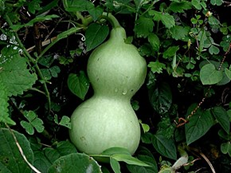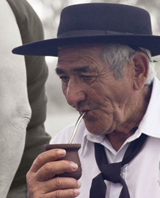This name refers to the yerba mate tree, a South American species, also known as 'Paraguay tea', 'Jesuit tea' or 'Brazilian tea'.

Maté foliage
The yerba mate is an evergreen tree that grows naturally on the banks of streams in mountain forests between 500 m and 700 m above sea level. In its natural state, the tree can reach a height of 20 metres. However, when cultivated, it is pruned so that it does not exceed four to eight metres. It is a hermaphrodite species with insignificant flowers. Its fruits are purple-red and measure 5-7 mm.
The branches are picked when the fruits are ripe. They are roasted over a fire until blisters form. The leaves are then separated and laid over a small wood fire for 24 to 36 hours. Finally, they are crumbled and bagged to be taken as an infusion, similar to tea.
Its pleasant aroma and bitter, slightly astringent flavour is reminiscent of smoke.
Mate is traditionally used to treat functional physical fatigue.
Taste it
Yerba mate is drunk from a calabash through a metal tube that also serves as a filter, the bomba. To savour it, the Gaúchos (horse trainers) organise themselves in a circle where it is passed from hand to hand according to a very precise ritual that invites the participants to pass the calabash counter-clockwise in order to make the time pass more slowly.

Calebasse
Its properties
Lhe active products present in its dried leaves and petioles contain traces of theophylline, theobromine (one of the hypothetical causes of the positive effects of chocolate on mood) and 0.3 to 2.4% caffeine.
They also contain traces of flavonoids: a compound of great interest due to its numerous health benefits: antibacterial, antiviral, antiplatelet, antiallergic, anti-inflammatory, antitumour and antioxidant activities.
Prepared in infusion, they have medicinal virtues. They serve as a nerve and muscle tonic, a stimulant for digestive functions and a diuretic.

